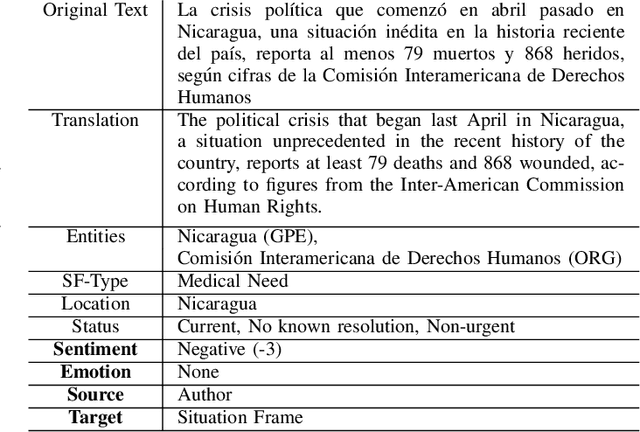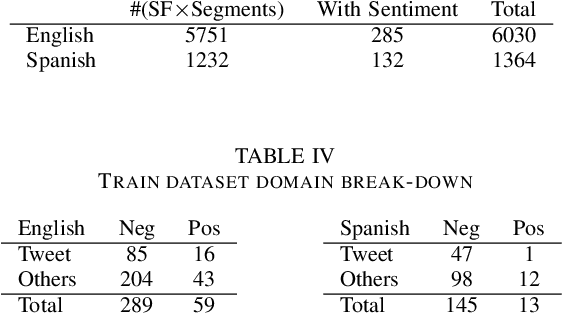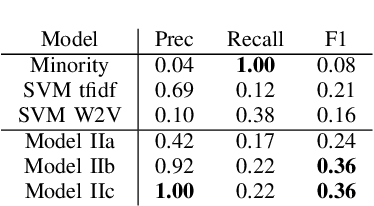Victor R Martinez
Victim or Perpetrator? Analysis of Violent Characters Portrayals from Movie Scripts
Aug 29, 2020Abstract:Violent content in the media can influence viewers' perception of the society. For example, frequent depictions of certain demographics as victims or perpetrators of violence can shape stereotyped attitudes. We propose that computational methods can aid in the large-scale analysis of violence in movies. The method we develop characterizes aspects of violent content solely from the language used in the scripts. Thus, our method is applicable to a movie in the earlier stages of content creation even before it is produced. This is complementary to previous works which rely on audio or video post production. In this work, we identify stereotypes in character roles (i.e., victim, perpetrator and narrator) based on the demographics of the actor casted for that role. Our results highlight two significant differences in the frequency of portrayals as well as the demographics of the interaction between victims and perpetrators : (1) female characters appear more often as victims, and (2) perpetrators are more likely to be White if the victim is Black or Latino. To date, we are the first to show that language used in movie scripts is a strong indicator of violent content, and that there are systematic portrayals of certain demographics as victims and perpetrators in a large dataset. This offers novel computational tools to assist in creating awareness of representations in storytelling
A system for the 2019 Sentiment, Emotion and Cognitive State Task of DARPAs LORELEI project
May 01, 2019



Abstract:During the course of a Humanitarian Assistance-Disaster Relief (HADR) crisis, that can happen anywhere in the world, real-time information is often posted online by the people in need of help which, in turn, can be used by different stakeholders involved with management of the crisis. Automated processing of such posts can considerably improve the effectiveness of such efforts; for example, understanding the aggregated emotion from affected populations in specific areas may help inform decision-makers on how to best allocate resources for an effective disaster response. However, these efforts may be severely limited by the availability of resources for the local language. The ongoing DARPA project Low Resource Languages for Emergent Incidents (LORELEI) aims to further language processing technologies for low resource languages in the context of such a humanitarian crisis. In this work, we describe our submission for the 2019 Sentiment, Emotion and Cognitive state (SEC) pilot task of the LORELEI project. We describe a collection of sentiment analysis systems included in our submission along with the features extracted. Our fielded systems obtained the best results in both English and Spanish language evaluations of the SEC pilot task.
 Add to Chrome
Add to Chrome Add to Firefox
Add to Firefox Add to Edge
Add to Edge